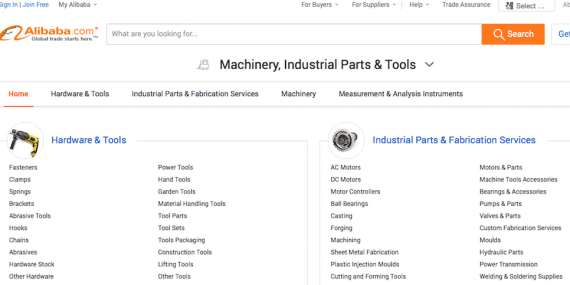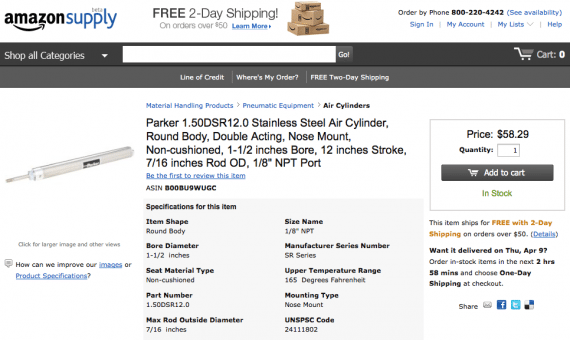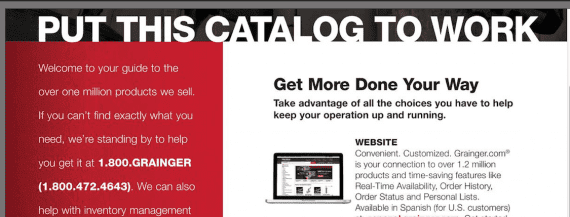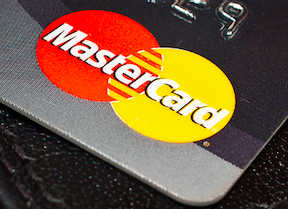While B2C ecommerce gets the most media attention, B2B ecommerce is the bigger revenue generator, both globally and in the United States. The entry of ecommerce giants such as Alibaba and Amazon into B2B has accelerated the trend of B2B websites becoming more like B2C. Online B2B sellers now recognize that the customer experience in a B2B environment is just as important as the customer experience for B2C.
Consequently, expectations have grown and more B2B buyers require a simple ecommerce experience that mimics the consumer purchase model. Detailed specifications and product descriptions are crucial. Amazon Supply — the company’s B2B portal — offers free two-day shipping on orders above $50, detailed specifications, and an underutilized, but available, customer review section.
B2B Market Size
Globally, by 2020 the B2B ecommerce market will be twice as large as the B2C market — $6.7 trillion vs. $3.2 trillion — according to research provider Frost & Sullivan. The company predicts that China will emerge as the largest online B2B market with $2.1 trillion in sales by 2020.
In the U.S., where B2B ecommerce is already twice as large as B2C ecommerce, Forrester Research expects B2B ecommerce sales to reach $780 billion and represent 9.3 percent of all B2B sales by the end of 2015. The firm predicts that B2B ecommerce will exceed $1.1 trillion and comprise 12 percent of all B2B sales in the United States by 2020. The firm forecasts a compound annual growth rate of 7.7 percent in B2B ecommerce over the next five years, resulting from the need by B2B companies to reduce their costs. Buyers also benefit from the self-service automated approach to purchasing, According to Forrester, 7.3 percent is the average conversion rate on B2B ecommerce sites, compared to 3.0 percent for consumer retail sites.

Alibaba’s entrance into the B2B market has accelerated the trend of B2B websites becoming more like B2C.
Largest Industries
Petroleum and petroleum products, as well as pharmaceuticals and druggist sundries, represent the largest categories today within B2B ecommerce, according to Forrester, and will continue to claim the largest share of all B2B ecommerce through 2020. The pharmaceutical industry will see 20 percent of total sales coming from online sources by 2020, the highest penetration of all industries. However, the fastest growing segments between 2015 and 2020 will be durable goods categories: motor vehicles; motor vehicle parts and supplies; electrical and electronic goods; and machinery, equipment, and supplies.
B2B Ecommerce Business Models
Different B2B business models exist and the best choice depends on the size and complexity of a B2B company and its available expertise.
- One-to-many. In a direct model, companies have their own B2B online store, where customers can purchase goods. Industrial supplier Grainger, one of the first catalog companies to move online, uses this straightforward model. In a private consortium, model companies create their own network that includes suppliers, distributors, retailers, and shippers. Only companies with substantial purchasing clout and a sophisticated supply chain infrastructure can make this work. Walmart Retail Link is an example of a private consortium.
- Many-to-many. The many-to-many model involves companies joining an extensive online B2B marketplace. This can be a private marketplace in which several companies choose to form a closed network, or a public marketplace model, which is open to all suppliers (some criteria for joining may exist) and is usually administered by a third-party with a recognized name and marketing and logistics expertise. Amazon Supply and Alibaba are examples of public marketplaces.
Trends
B2B online buying will increase as many enterprise and procurement software vendors are making mobile versions of their products available and employees of the purchasing companies will use smartphones and tablets to buy goods anywhere and anytime.
According to Forrester, B2B companies can substantially decrease sales costs — up to 90 percent — by guiding customers to an online self-service ecommerce environment. In a 2013 Forrester survey, 52 percent of B2B ecommerce executives surveyed reported that migrating formerly offline-only customers to online purchasing reduced their customer support costs. Grainger, a pioneer in B2B ecommerce, has stated that 94 percent of its 2014 revenue growth came from online sales.
Differences still exist between B2B and B2C ecommerce — prices fluctuate often with customer-specific pricing and volume-based discounts, and impulse buying does not exist. However, characteristics of B2C ecommerce have made their way to B2B websites. Among them are:
- Personalization and customization;
- Interactive catalogs;
- Customer reviews;
- Real-time inventory availability.
Many B2B buyers now prefer to both research products and buy online. Strong growth will continue over the next five years, especially purchases via mobile devices.






